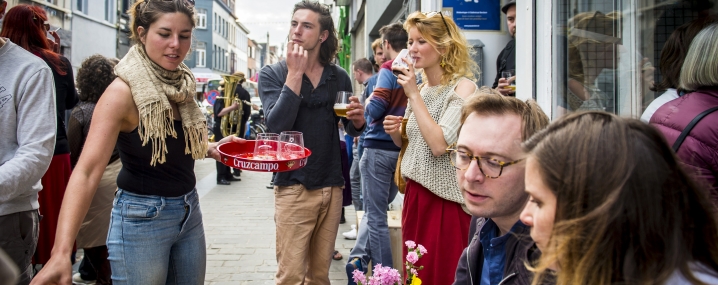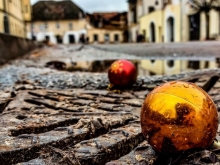
San Donà di Piave
The city is built in a flood plain where the marshes were drained. This is an engineering feat but at the same time a constant reminder for politicians, officials and local stakeholders that the priority is to make the city as resilient as possible. It has a history where it was able to recover from natural disasters and wars.
It is a new city, a phoenix that has risen from the devastation caused a hundred years ago in World War I. Although many buildings were restored, the centre has a ‘modern feel’ to it that is evident with the several buildings from the 20th century architectural periods and the fine grain urban form.
Residents take pride in their capacity to overcome adversity and their efforts to restore and build the city. Danilo Gerotto, Director of Economic Development, points out that 60 years ago the Veneto Region was a poor area in Italy and today it is one of the richest. He attributes this to a belief in self-reliance and a can-do mentality of the local populations.
The Municipality is developing policies to influence the sustainable development of the city. These include a focus on changing transportation patterns in the city to become less car-oriented and to have infrastructure and services that make cycling, walking and using the buses much more convenient and accessible for local residents.
Andrea Cereser, mayor of San Doná Di Piave cites one example of changing the culture around to more sustainable modes of transport namely the establishment of the Pedibus system. Working with local schools and the Municipality parents established routes to escort children walking in a group or ‘bus’ to school. The system includes collection point ‘bus stop’ signs and a roster of volunteers ensuring there is supervision and adult guidance walking with the children to and from school. It is also efficient as up to 75 children can be accommodated in a ‘bus’.
The Municipality has also adopted a planning policy that restricts new housing and commercial development to the existing built environment. In this regard more than 2,000m2 have been rezoned back to green field that will not be available for development. In this way the direction for new development is clearly higher density in locations that are in convenient walking distances to services and work – in particular to the city centre.
Giulio Antonini, Director of Social Services, advocates for a city that is compassionate with a focus on the basic needs of all its residents and to hence increase the liveability of the city for all122. The Social Strategy of the Municipality emphasises an integrated approach to development where economic growth/efficiencies and social inclusion have equal importance. He gives the example of social housing where the Municipality contract housing cooperatives to manage and maintain its apartments with incentives to employ people with disabilities. In this way costs are managed and jobs are targeted to the needier groups.
The challenge will be to accelerate the conversion and development of existing buildings (public and private) to meet the needs for affordable housing123. It is however not just a question of supply and demand. It is also a question how private developers and investors can be engaged to develop housing that will have the desired impacts. In this regard the Municipality is committed to community development processes that will allow not only accommodation of people but for the development of communities where people care for each other and for their neighbourhood.
In summary, San Doná Dona di Piave is a city in the Venice Metropole that is experiencing the benefits of urbanisation and economic growth. The local leaders are determined that with citizen support the growth of the city will be on a path of sustainable development.
This requires an understanding of the limitations to development as well as the hard choices that have to be made by the city and its residents. To this end the Municipality is committed to the development of the city with higher densities, more walkable and cycle-friendly and much less car dependent.
The city will continue to face challenges testing its resilience – some will be not in the city’s control such as natural disasters, but others are more manageable such as the integration of immigrants and helping residents to develop a new deepening relationship with their city centre.
SOME RELATED NETWORKS
CityCentreDoctor
Article
Croatia earthquake: URBACT cities rally support for devastated Petrinja
Article
5 URBACT lessons to improve Placemaking in your city
Article
How residents and businesses are re-energising their city centre
Article






